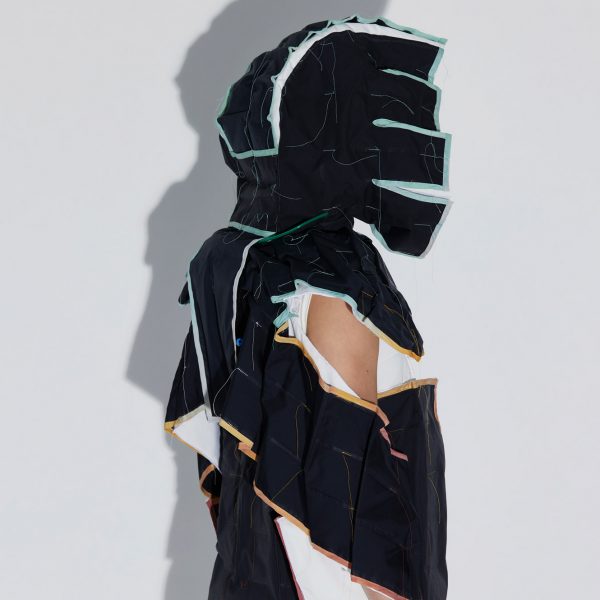[ad_1]
Swedish School of Textiles graduate Pola Demianiuk has designed a collection of self-moving garments named Soft Assembly, which curl and contract around the wearer’s body.
Created as part of her postgraduate fashion design degree, Demianiuk applied soft robotics – a subfield of robotics focusing on technologies mimicking living organisms – to produce the kinetic clothing.
The designs unfurl and wrap around the body without the need for the user to move, which has potential benefits for those with mobility issues.
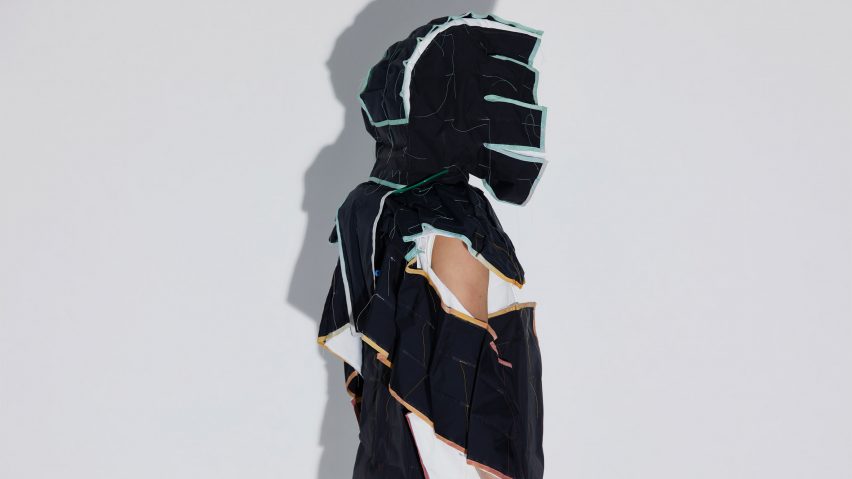
“The concept questions the reality where the garment is static and the body is the active agent in the dressing-up process,” Demianiuk told Dezeen.
“Through this speculative approach, the work introduces a fresh relationship between body and clothing in the service of wellbeing. In other words, the garment assists the body to be dressed,” she continued.
“The potential of this technology reaches way beyond the fashion field.”
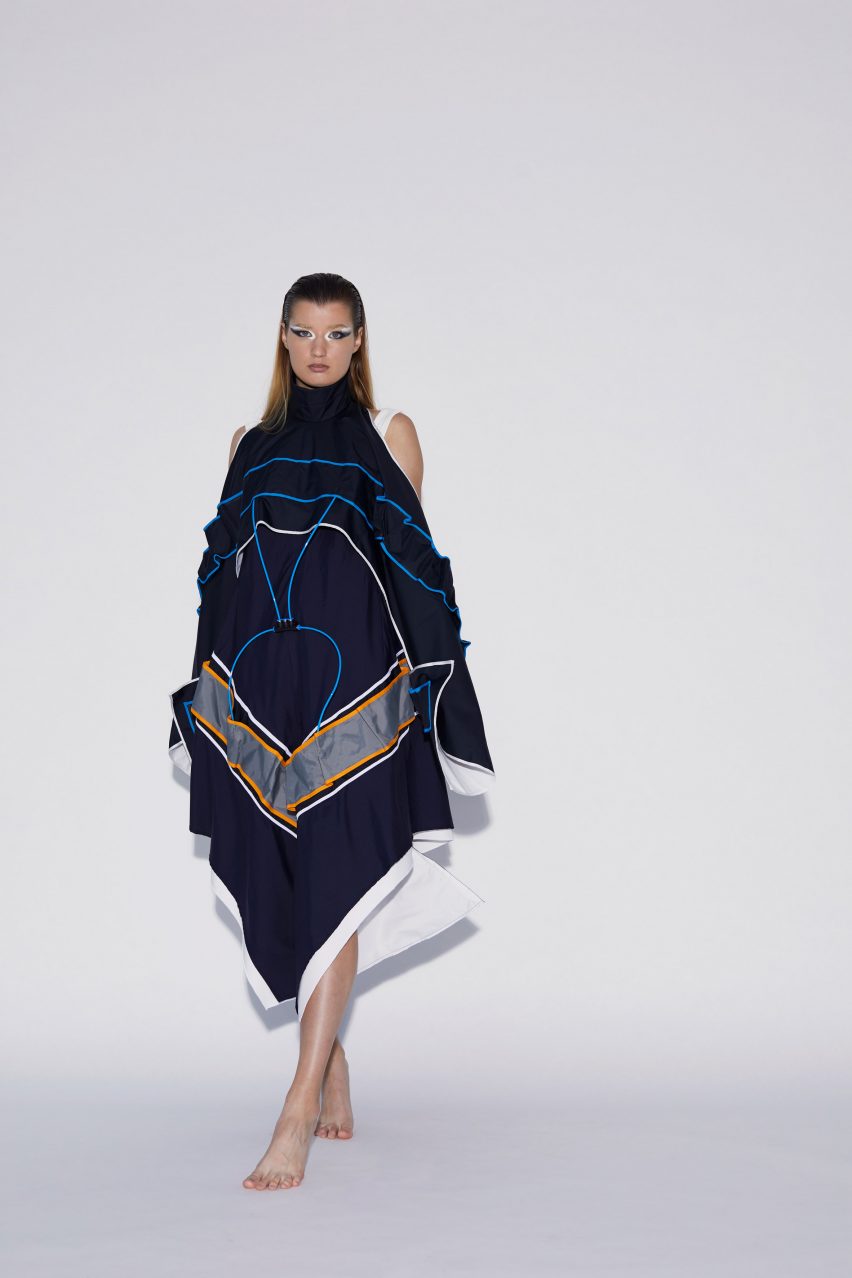
“A solution this project brings could be improving the wellbeing of immobile users and their caregivers with assistive devices or independent smart garments,” Demianiuk explained.
“Such facilities might find a great use in medical and therapeutic fields like in hospitals or nursing homes, but also spread commercially to empower those who want to sustain their independency during this intimate procedure of dressing and undressing.”
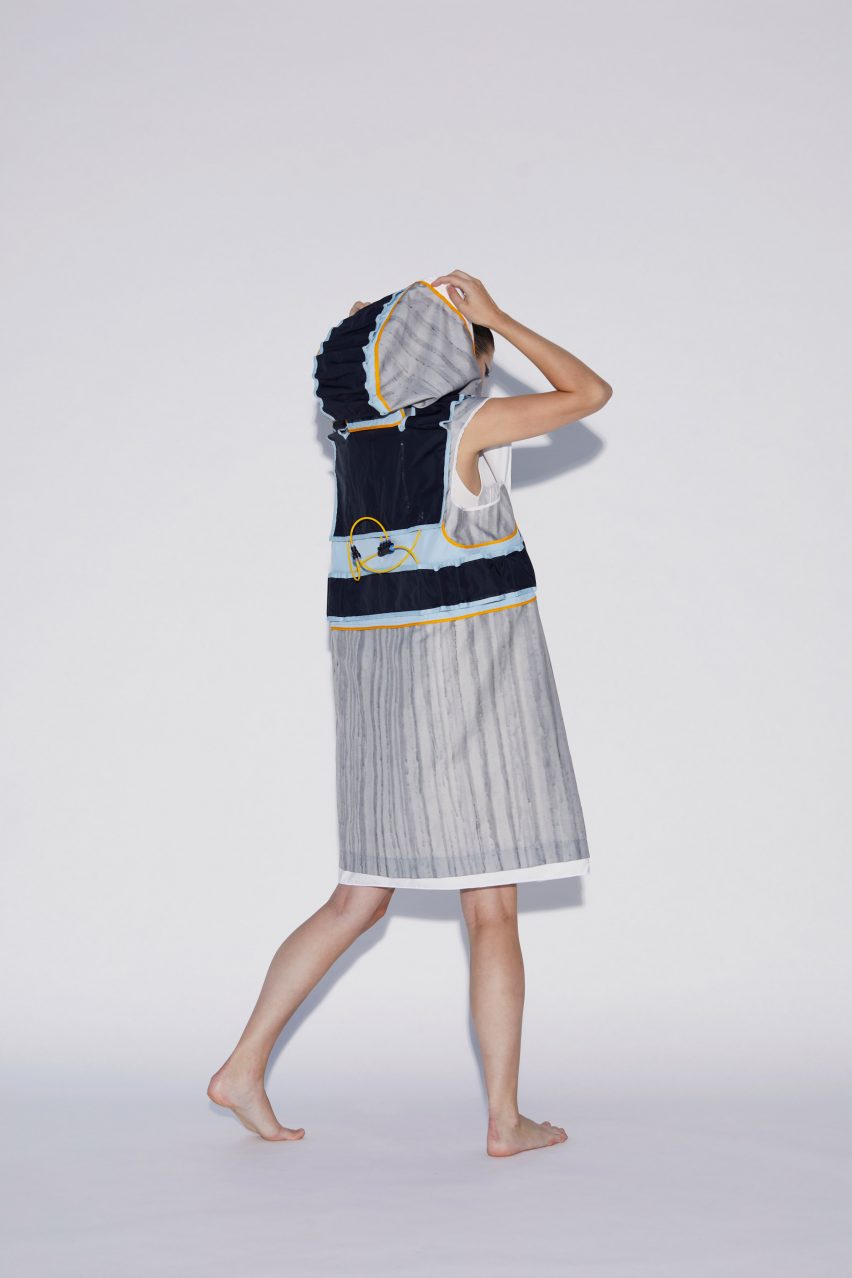
The designs move using built-in inflatable elements that expand into dynamic forms, causing the attached fabric to move with it.
The movement was designed to be smooth and organic for comfortable wear.
One method of combining material and inflatable technology, which Demianiuk describes as “elastic”, was comprised of knitted fabric and balloons.
The “non-elastic” method was made from laminated woven fabric connected to an ultrasonic machine, which was gathered and stitched in segments to produce the desired movements when inflated.
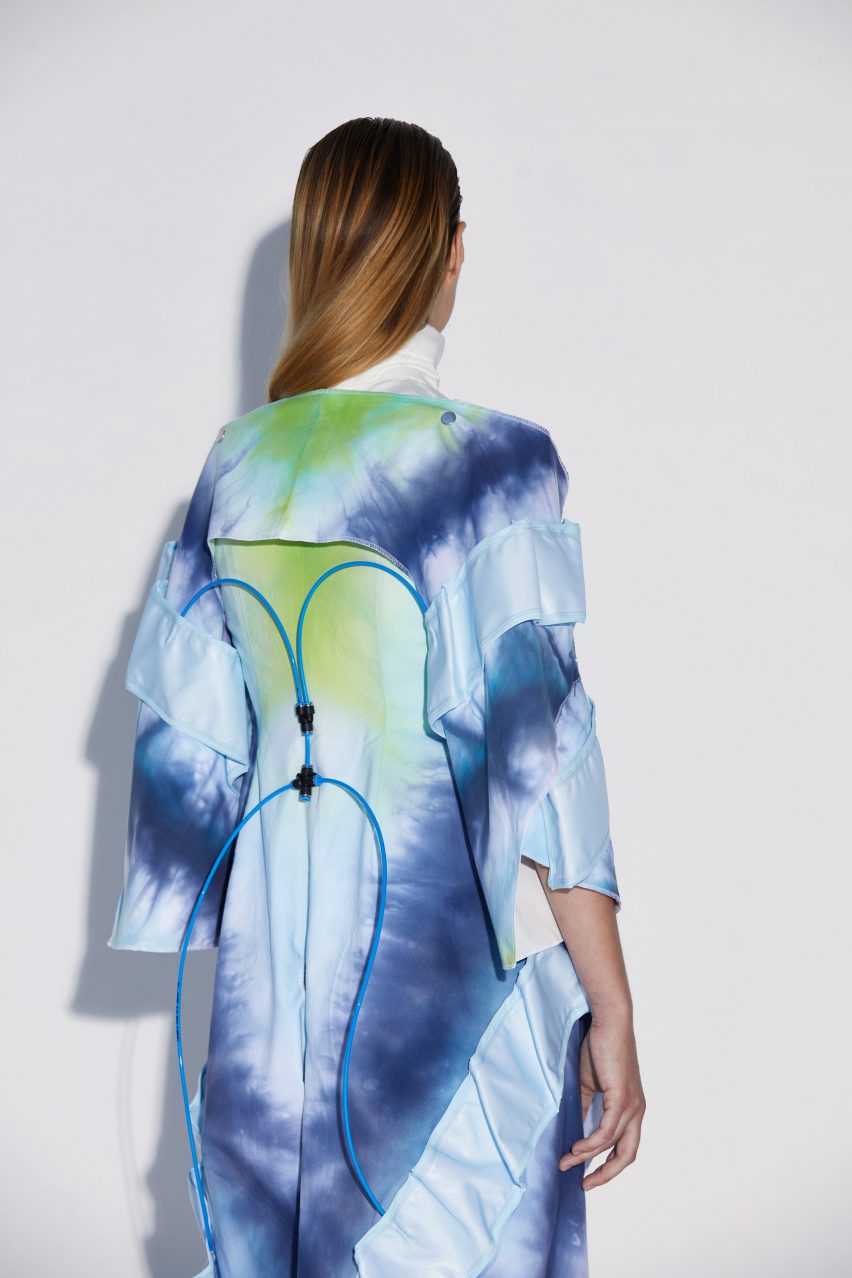
“Because they are actuated pneumatically, most of the garments do not consist of rigid or electronic parts, which makes them soft, comfortable, light and washable,” said Demianiuk.
“The key factor for their performance is the relation between more and less stretchable surfaces. The air pressure accumulated in the pre-designed chamber expands its walls and forces the rest of the structure to bend in this area.”
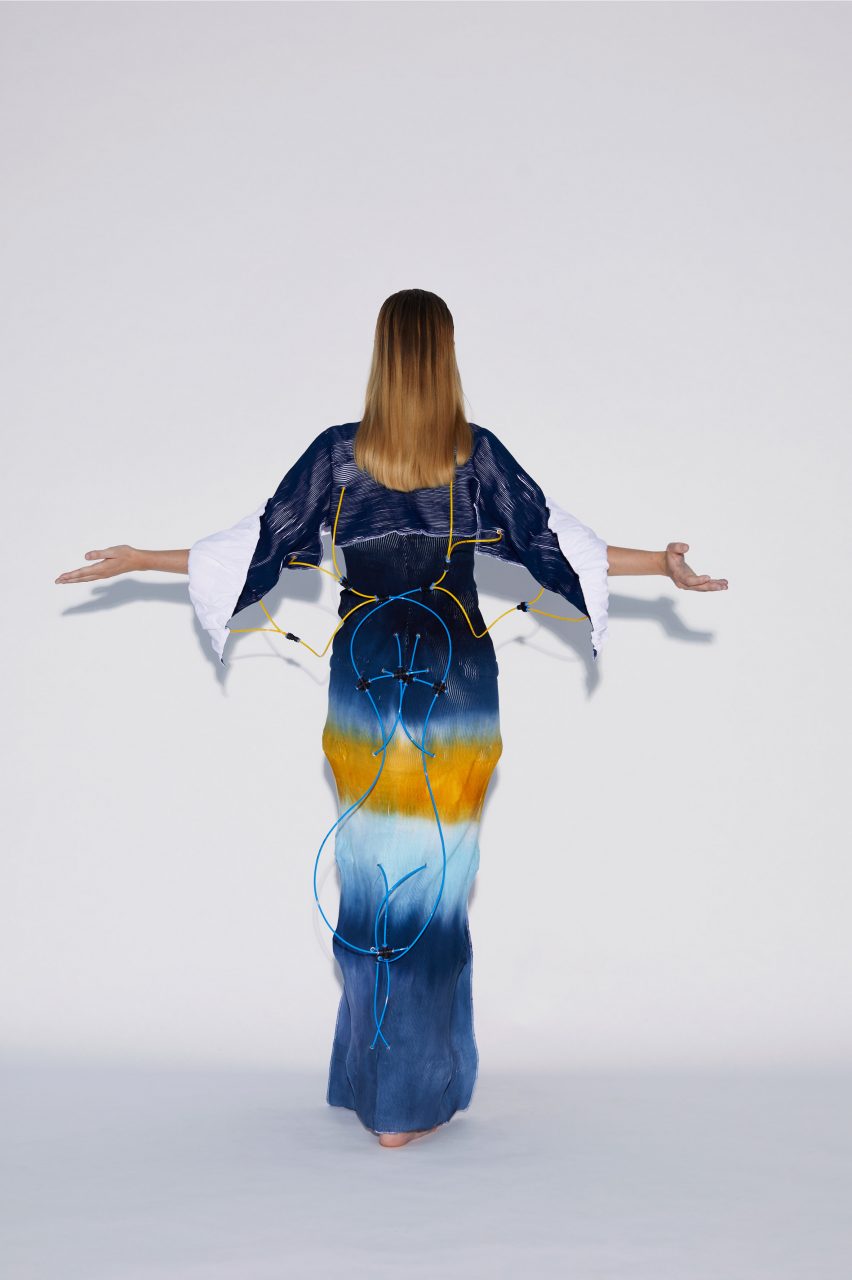
The collection includes trousers, a suit, a dress, a sweater, a hooded vest and a puffer jacket. The garments have a white lining covering the inflatable segments, and the outer layer is finished in dark or colourfully patterned fabric.
This creates a visible differentiation between the unassembled clothing, where mainly white is showing, and the fully assembled final form.
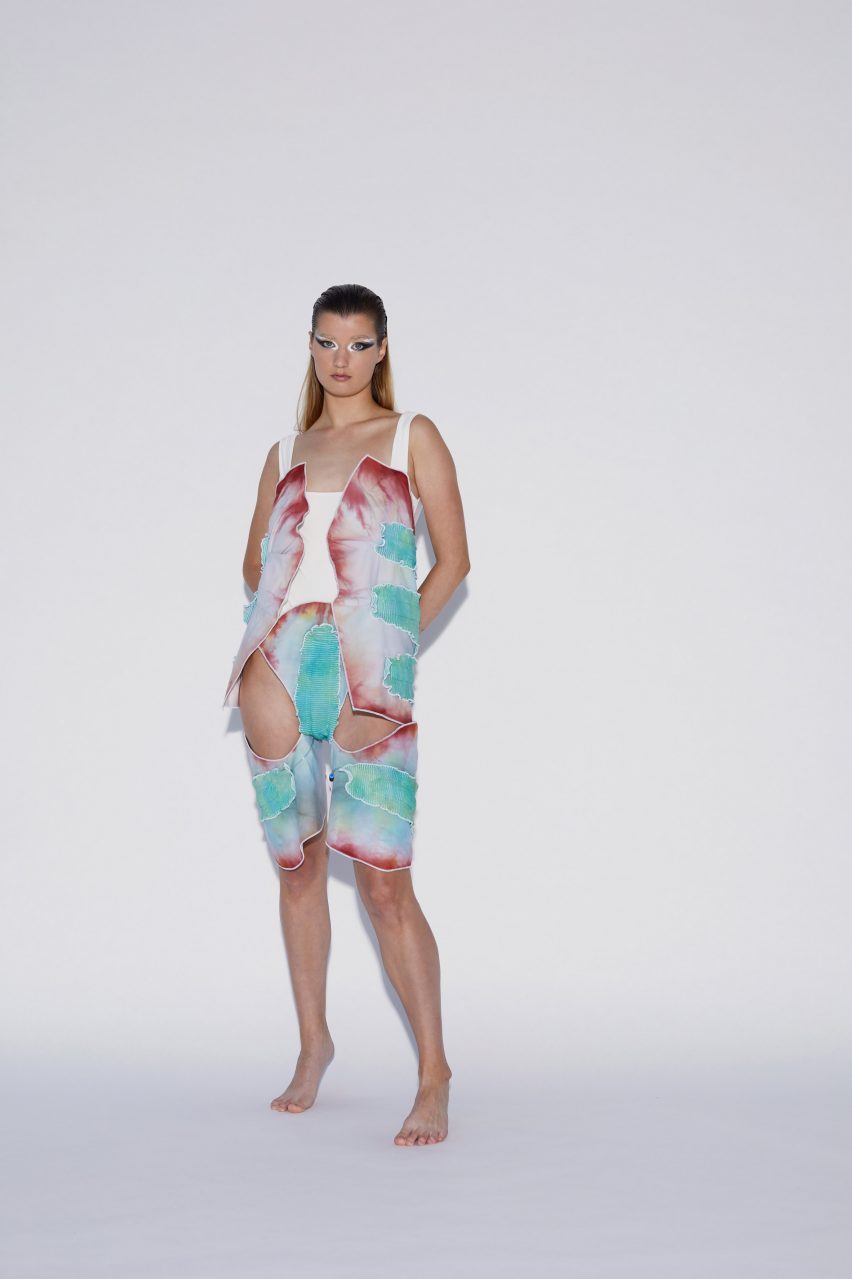
Demianiuk hopes to develop the Soft Assembly design in the future and continue to explore how soft robotic technology can be used in fashion to improve user wellbeing.
“My great ambition is to cooperate with research teams in a multidisciplinary environment because I already know this is the future of design, a better future for all of us,” she said.
Other designs that feature moving and interactive clothing include a dress that changes shape and colour to mimic the growth of a flower and tops that change colour in response to the wearer’s change in stress levels.
The photography is by Daniela Ferro and the video is by Pola Demianiuk.
[ad_2]
Source link

